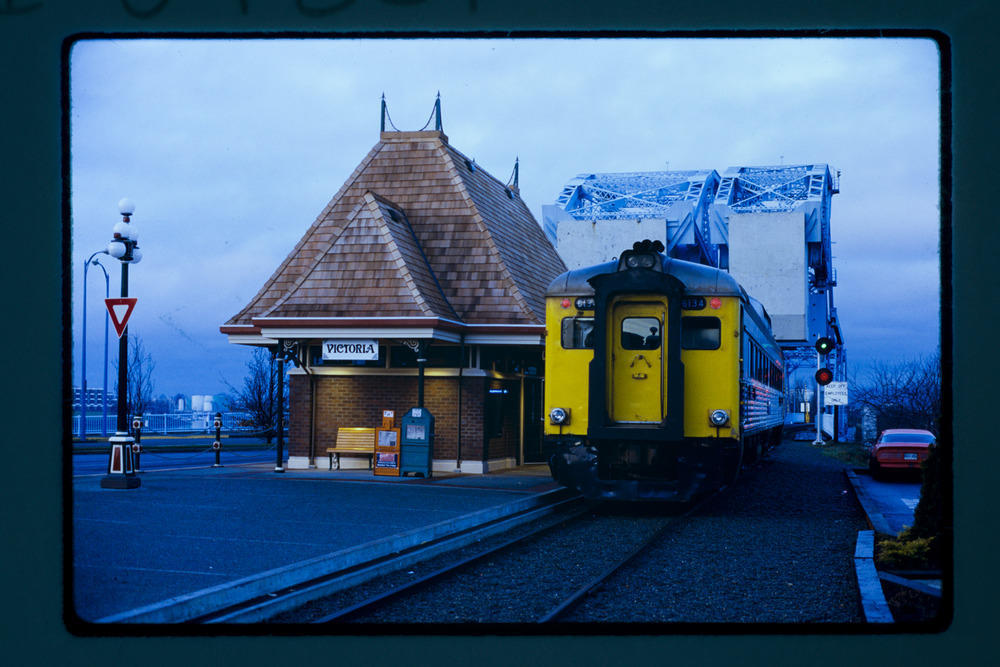Decision on future of Island rail corridor just weeks away
A brief history of the E&N Railway

Want to know keep up-to-date on what's happening in Victoria? Subscribe to our daily newsletter:
A brief history of the E&N Railway
A brief history of the E&N Railway
A brief history of the E&N Railway

The clock is ticking for the federal and provincial governments to decide if they will restore the E&N Railway.
“This is not going to be the continuation of another story,” said Larry Stevenson, CEO of the Island Corridor Foundation(ICF). “This is the decision. We're going to be bound by whatever happens here.”
The railway’s future is connected to a complicated history, one that starts with the terms of the agreement for BC to join Canada in 1871. A term of that union was that the federal government would secure a rail line through the province—a condition that took years to iron out but was eventually ratified in legislative agreements.
That agreement had BC give the federal government land for railway building—with the Vancouver Island portion tasked to the E&N Railway Company (eventually acquired by Canadian Pacific Railway).
But the railway would cross nearly 11 acres of land in what was then known as the Nanoose Indian Reserve of the Snaw-Naw-As First Nation, which would have been a problem for the rail builders except that the Indian Act allowed for the taking of reserve lands for “the purposes of any railway” with consent from the Governor in Council.
Permission was granted, the railway was built, and over the following decades the rail line would be sold several times before being taken over by the federally-incorporated, non-profit, Island Corridor Foundation (ICF) in 2003; the owner to this day.
After attempts to secure funding for repairs, passenger rail service was decommissioned in 2011 due to safety concerns, and the remaining freight service between Duncan and Parksville was discontinued in 2014.
The majority of participants in a 2018 provincial roundtable meeting supported restoring the corridor and rail service, but a 2020 assessment estimated total costs between $326 million and $728 million.
In 2020, Snaw-Naw-As First Nation (Nanoose) sought the legal return of its reserve lands, which it stated, in a notice of civil claim, were no longer being used for the railway. That claim was dismissed by a trial judge who ruled the land was still, in fact, being used for railway purposes because of ICF’s continued maintenance of the corridor.
Snaw-Naw-As First Nation’s claim notes that the ancestors of its community occupied the lands of the present reserve at and before contact with European settlers.
“Pursuant to the Douglas Treaty the village site or sites of the signatories of the treaty were to be reserved for them and their descendants,” the claim said.
On appeal in 2021, Justice Barbara Fisher neither completely upheld nor reversed the trial court’s decision, instead flipping an hourglass by giving the federal and provincial governments 18 months to make decisions about funding the repair and revival of the Island corridor infrastructure.
Snaw-Naw-As First Nation, Fisher said, could return to court to enforce its right of reversion if the governments did not approve funding.
The approaching deadline for those funding decisions is March 14, 2023.
In January, Gordon Edwards, chief of Snaw-Naw-As First Nation, made a statement to CHEK News saying that operating and repair costs of the rail line were unsustainable, and the railway’s value was now “in its parts.”
The E&N Railway’s construction guaranteed Vancouver Island’s place into the Dominion of Canada, Edwards wrote. “In that sense the corridor has served its purpose.”
But ICF CEO Larry Stevenson has maintained his vision for a new type of Island commute, telling Capital Daily in 2020 that with substantial renovations, the railway could move people and freight traffic in a new way, reducing vehicle congestion and improving the Island’s circulation.
Stevenson is pleased the courts applied pressure to the process, and that, by his standards, the province has stepped up to plate with engagement, consultation and technical reviews.
“I've not been given an indication by either government, that they're going to go ahead or that they're not going to go ahead,” he said. “But I'm very encouraged because they're actually doing the work, which I think is so critically important.”
“This conversation has gone on for a very long time on this island,” he added. “We're finally going to come to some conclusion. And I think that's a good thing for all of us.”
With files from Martin Bauman and Zoë Ducklow
*An earlier version of this story incorrectly attributed the appeal court decision to the trial court judge. This article has been adjusted to correctly attribute that decision to Justice Barbara Fisher.*